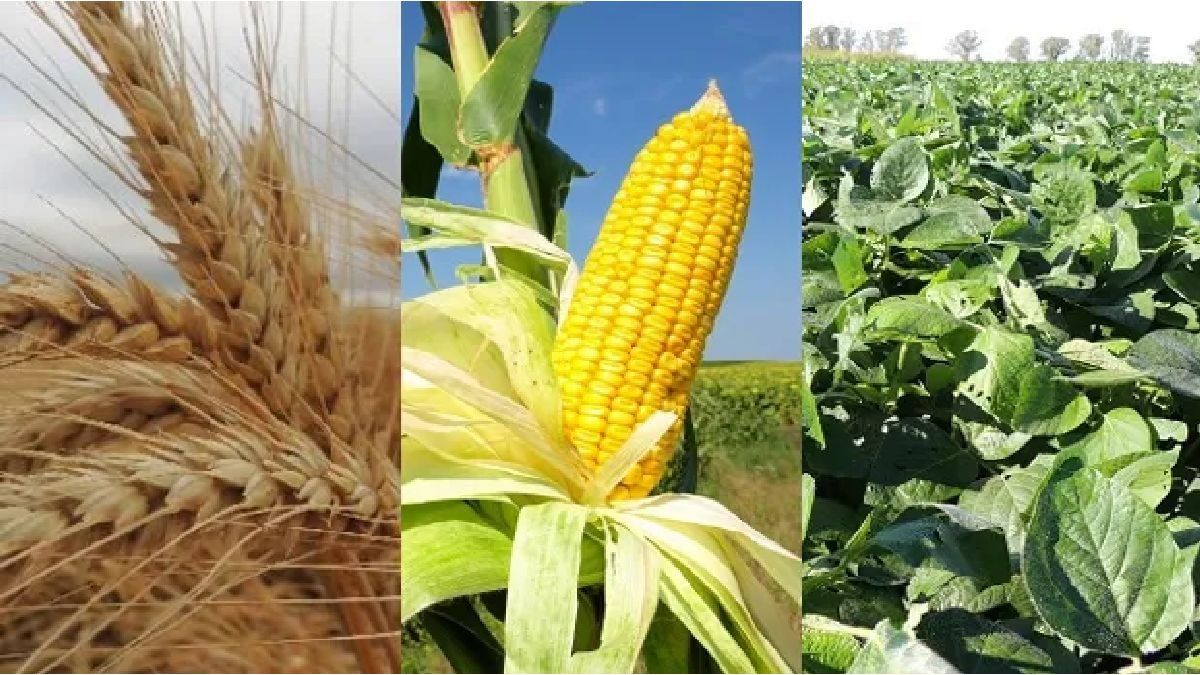For now, there were no improvements until the second half of January. High temperatures and lack of water are a lethal combination for plants, which is why damage is already beginning to be observed in corn and soybean plots, on which the agricultural economy is practically based.
Christian Garavaglia, meteorologist from Meteored Argentina detailed in his latest report that “In these first days of 2025, Argentina and the entire southern region of South America entered a classic regional circulation pattern associated with La Niña at this time of year.” In addition, he highlighted “the dominant stability in a large part of the national territory that inhibits the arrival of cold fronts and the formation of precipitation towards the central part, leaving convective activity restricted and greatly enhanced over the northwest region and Cuyo, especially in areas of mountain. The occasional storms that manage to form in isolation towards the center of the country respond to intense surface heating in combination with small atmospheric disturbances at altitude, but not a frontal system that arrives to produce a change in the air mass.”
Without rain in the central area of the country, yield projections are diluted. In fact, the Buenos Aires Grain Exchange warned in its Weekly Agricultural Panorama that with more than 90% of the soybeans planted on a total estimated at 18.4 MHa, 81% have a water condition between adequate and optimal. This figure is falling (7 pp vs. the previous report) and could worsen in the coming days. As for corn, 87.4% of the 6.6 MHa have already been planted. estimated for the current campaign and the consequences of the lack of rain are also being suffered. According to the stock exchange entity, “The proportion of crops with a water condition defined as optimal or adequate was reduced by 6.8 pp, due to high temperatures and lack of precipitation in the central-eastern part of the agricultural area. This situation has affected soil humidity, although for the moment it has not generated significant impacts on the development of crops, except in the South Core area, where symptoms of water stress are beginning to be observed, such as the yellowing of the basal leaves with possible declines in performance.”
This same situation has just been confirmed by the Agricultural Risk Office (ORA), which depends on the Ministry of Agriculture, by confirming that “a decline in the water content in the soil is generally observed, as a consequence of two weeks with predominance from areas with little rainfall. Above all, in the province of Entre Ríos there is a transition from regular reserves to deficits.”
Besides, The report highlighted that the early-planted corn located in the northeast of Buenos Aires is, for the most part, in full flowering and beginning to fill grains. It is very important that precipitation occurs, since the first batches are observed that began to dry at the base of the plants. At the same time, the south of Santa Fe, La Pampa, southwest Buenos Aires and northeast of Buenos Aires are going through a similar situation.
Markets on alert
Low international prices force different strategies to be taken, even more so for Argentine producers, who, unlike what happens in Brazil or the United States, suffer the consequences of the lack of rain at the critical moment of the campaign.
As Enrique Erize, head of Novitas Consulting, defined, for now “Chicago does not react.” It happens that “the fundamentals of the market are bearish. In this context, the US government defined “extra” aid for its farmers of 31,000 million dollars (almost an Argentine harvest). Brazil, for its part, devalues its currency and its producers breathe a sigh of relief. In China, the yuan does the same (this improves its purchasing power). Here, in Argentina, the agricultural producer is worried and anguished by a very negative relative position compared to his competitors.”
It is likely that producers will decide – in this context – to buy time and wait to define what to do with the production they can obtain. According to Erize, “17 MMT of old soybeans (35%) are still unpriced. Of the new wheat and with the harvest virtually completed, only 4.8 MMT (25% of the estimated production) has a price. For its part, of the expected 2024/25 corn production, less than 3% have a price set in mid-December (unpublished). Of the new soybeans, nothing yet: with the price already set there are less than 500 thousand tons (vs. 3 MMT on the same date a year ago).”
The very short-term expectation is placed on what the United States Department of Agriculture (USDA) publishes next Friday in the global grain supply and demand report (WASDE), where cuts in the soybean harvest could be announced and corn for Argentina and the United States.
What do meteorologists say for the remainder of January?
The report on Agroclimatic Perspectives published by the Buenos Aires Grain Exchange has just indicated that “the “weak girl” episode (as called by the entity) is expected to begin to dissipate at the beginning of autumn 2025, but unfortunately, it will also An early reactivation of the polar circulation is expected, reactivating the drought in a large part of the agricultural area of the Southern Cone and causing a thermal regime with large oscillations, which will combine late heat and cold. early, with risk of localized and general frosts.”
For now, the news is not encouraging. According to Garavaglia, “the persistent heat will continue to play a leading role, as well as the marked absence of rain over the center and north of Argentinawaiting for this persistent pattern to be reversed by the second half of January, as some forecast models are beginning to suggest.”
Source: Ambito
I am a 24-year-old writer and journalist who has been working in the news industry for the past two years. I write primarily about market news, so if you’re looking for insights into what’s going on in the stock market or economic indicators, you’ve come to the right place. I also dabble in writing articles on lifestyle trends and pop culture news.




